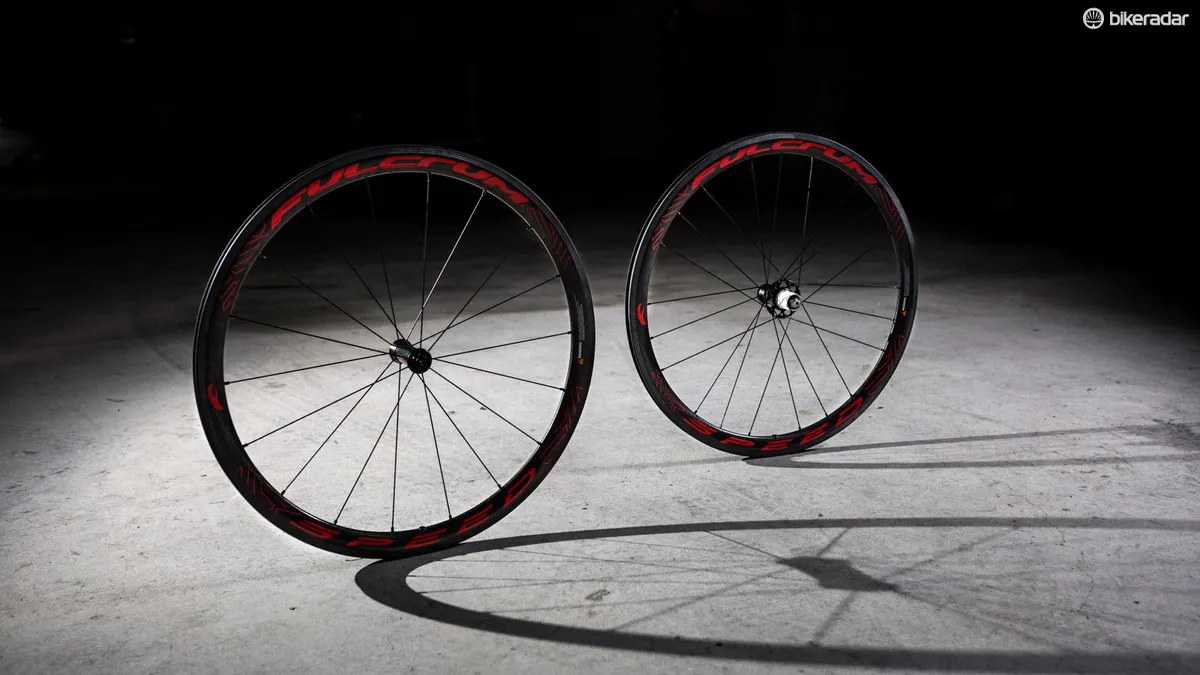With its latest wheel release the Speed 40, Fulcrum says it's aiming to bring every bit of technology and performance from its tubular version with the convenience of clinchers, but do these flashy carbon hoops deliver?
- Best road wheels — our top picks
- Best road bike tyres: what you should look for
- DT Swiss partners with Swiss Side to create endurance wheels
On the World Tour there is no doubt about the advantages to tubular wheelsets. With no tyre bead they're lighter and much safer during a puncture because air pressure isn’t needed to keep the tyre attached to the rim. For the rest of us, tubular can seem a bit out of reach — not only do you need to know how to glue the tyre onto the rim, but if you get a flat out on the road you’re in for a bad day
Fulcrum Speed 40: what you need to know
- 17mm internal width, 24.2mm external
- 40mm deep
- 1,420g actual weight (630g front, 790g rear)
- 3Diamante brake track
- USB ceramic bearings
- Undrilled tyre bed
When the big brown box containing the Speed 40s was dropped off at our Australian HQ, the unboxing didn't take long.
As I pulled the wheels from their bright red wheel bags the first thing I noticed was the strikingly glossy 3k weave — these are a fantastic looking wheelset and there is some definite bling factor here.
If the red decals are a bit too loud for your personal taste however, Fulcrum does also offer the Speed 40s with dark labels.
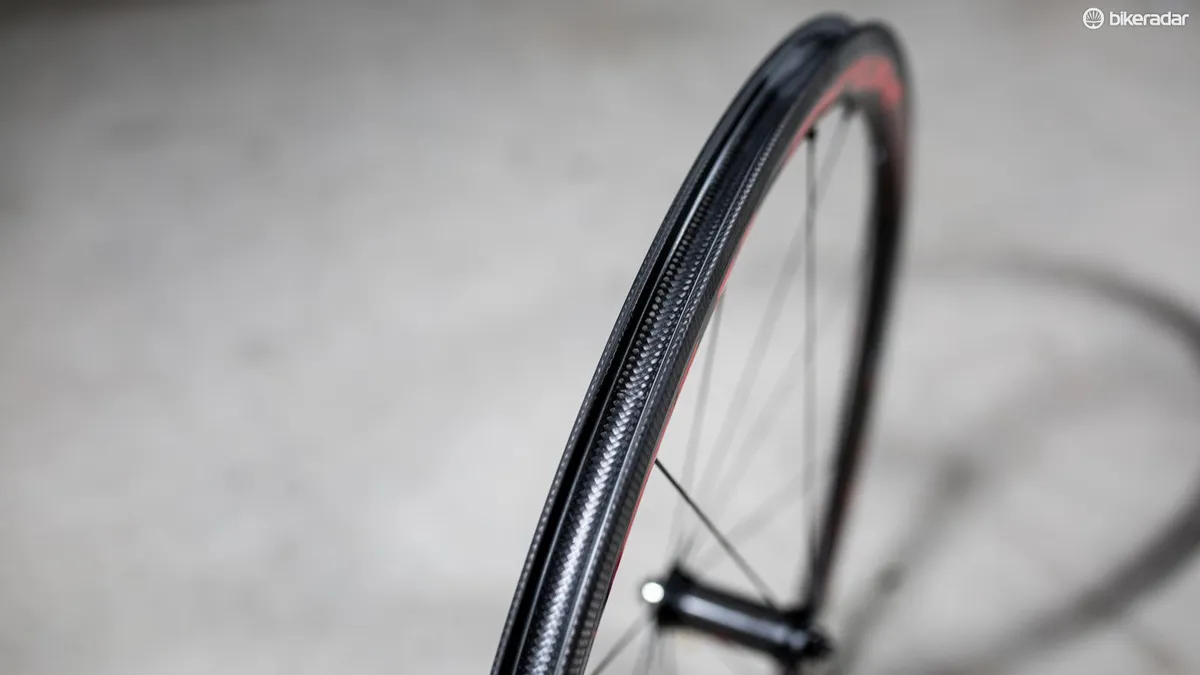
The second thing I noticed was the undrilled rim bed. Instead of the standard method of drilling holes in the rim bed to insert the nipples, Fulcrum (and its parent brand, Campagnolo for that matter) inserts the nipples through the valve hole and guides them to the spoke holes using a magnet.
This allows the spokes to be tensioned using a standard external nipple, which eliminates the need for rim tape and Fulcrum says it also creates a stronger and stiffer rim.
When the wind was blowing I did notice pulling on the rim and a bit of steering feedback
Interestingly, despite the sealed rim bed, the Speed 40s are not rated for tubeless set ups and it seems to me that Fulcrum has missed an opportunity here.
Personally, I am on board the tubeless bandwagon because the idea of self-sealing punctures, the ability to run low tyre pressures for added grip and comfort, and less rolling resistance are all positives in my book — especially considering a tubeless tyre won our recent rolling resistance lab test.
With the sealed rim bed, I’m sure some will attempt to make a tubeless conversion work, but I’m not game to try with a wheelset that costs north of two grand.
Considering that these are Fulcrum's flagship mid-depth carbon clincher, they’re respectably light, with this set tipping my scales at exactly 1,420g — that's 5g lighter than Zipp’s 303 NSW clinchers.
While Fulcrum claims the Speed 40 clinchers offer all of the advantages of the tubular version of the wheel, it is worth pointing out that the tubular version is claimed to weigh 1,213g.
By today's standards, a 17mm internal rim width isn’t particularly wide, but when paired with a 25c Michelin Pro4 Service Course it spread the tyre beautifully. The casing is well supported by the rim and I was comfortably able to run 80psi with no squirm or squish.
Fast wheel performance
With minimal rolling mass, the Speed 40s spin up quickly and feel well suited for cat and mouse quick accelerations. When you hit the gas the wheels react almost instantly to the input.
I can’t quantify any aero gains on offer (Fulcrum also does not make any specific claims), but like you’d expect from a deep section wheel, once they spin up to about 17–20mph / 27–32kph they want to keep rolling and hold their speed.
Given the current industry trend towards the toroidal ‘snub nose’ shaped rims, the 40mm rims are actually quite pointy, all things considered — the torus shape is said to be more aero and handle better in crosswinds.
When the wind was blowing I did notice pulling on the rim and a bit of steering feedback, but it was not drastic, nor unpredictable and I never felt like I was to be wrestling the bike to keep my line — more rounded profiles like Zipp's NSW or Enve's SES shape suffer less from this ghost steering.
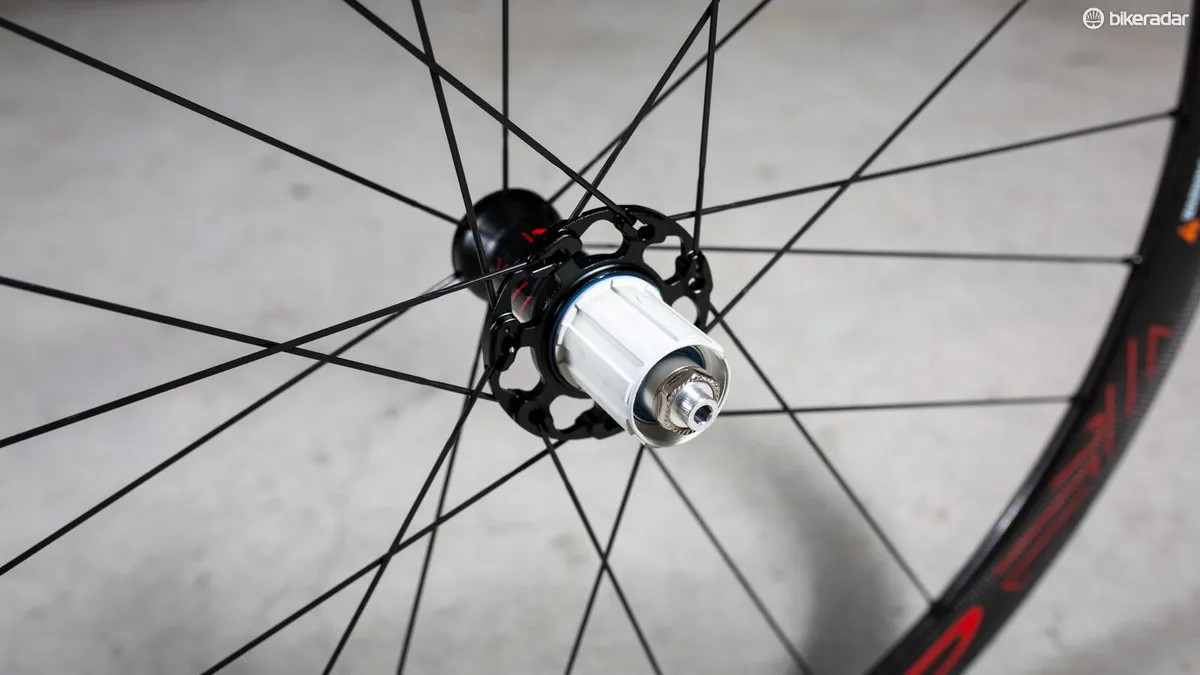
They’re pretty stiff too, with 18 radial spokes at the front and 21 rear spokes laced in a 2-to-1 pattern. While this specific idea isn’t necessarily unique to Fulcrum, it allows two spokes to carry the load that only one would in a standard lacing pattern, which allows for a stiffer wheel and helps to balance spoke tension.
Not being a particularly heavy rider at 70kg / 155lbs, I’m not one that usually has trouble with wheels bending under my weight, but the Speed 40s are solid, agile and responsive.
Despite their stiffness and relatively pointy profile, the Speed 40s are not jarringly uncomfortable, although some of the credit goes to the Michelin rubber I used throughout my testing. On everything from rough pavement and even a bit of gravel, these wheels didn’t leave my body feeling beaten and battered after four-plus hours in the saddle.
As you’d expect with wheels of this calibre they came out of the box dead true. Fulcrum also includes an identification card, which allows the wheels to be traced back to the builder, allowing for guaranteed quality control.
Carbon stopping power
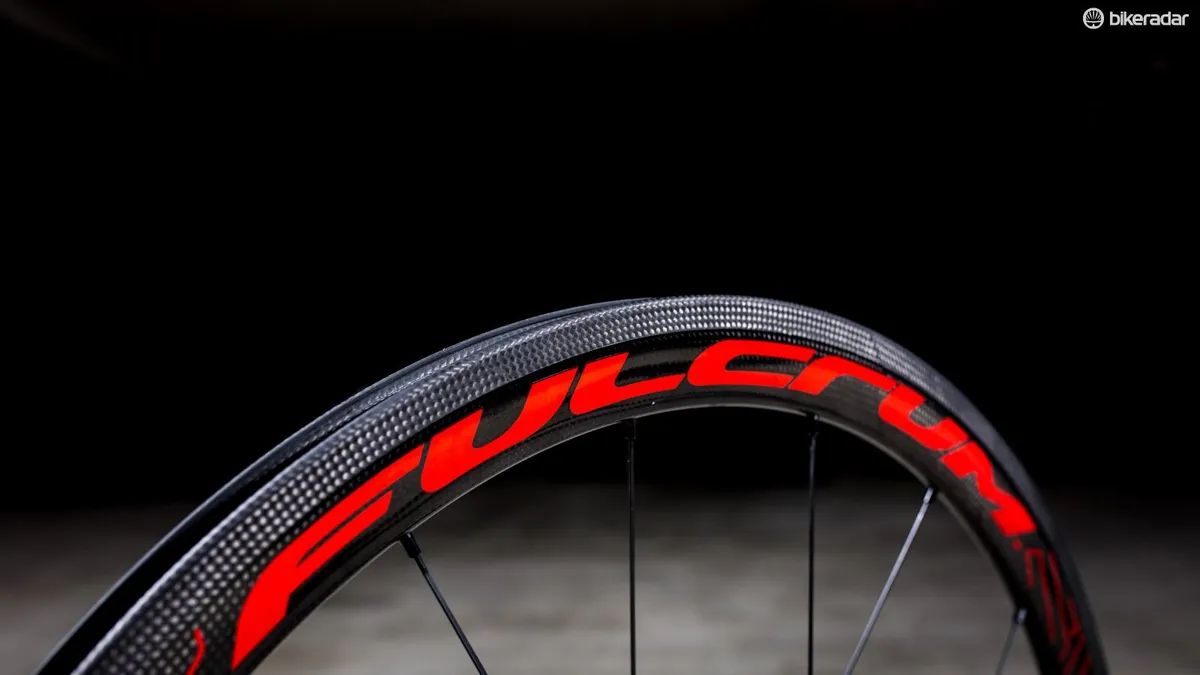
Braking on carbon wheels is always a sore spot and although it has improved greatly in the past couple of years, alloy rims outclass them in all weather conditions.
The Speed 40 rims are laced around Fulcrum's own hubs which spin on the brand's USB ceramic adjustable cup and cone bearing system
Pioneered by Fulcrum's sister brand Campagnolo, the Speed 40s get the 3Diamante surface treatment, which Campy and Fulcrum say uses advanced machinery and state of the art diamond tipped precision tools to work the braking surface of the rims.
This process eliminates imperfections caused by non-homogenous resin deposits and allows the brake pad to work directly atop specially woven carbon fibres.
Wheel manufacturers have long been grappling with how to improve braking on carbon and I have seen plenty of proprietary treatments and laminates like those used by Mavic and Reynolds, as well as grooved and textured ones like Zipp’s Showstopper. The 3Diamante treated brake track on the Speed 40s, when used with the included Fulcrum pads, offers good power that ramps up well and has plenty of modulation without being grabby.
In the wet, as is to be expected when you squeeze the brakes, nothing happens at first, but once the pads clear the water from the braking surface the 3Diamante treatment works and the braking is consistent and gives plenty of power to boot — with no banshee squeals to let everyone know you’re on the brakes.
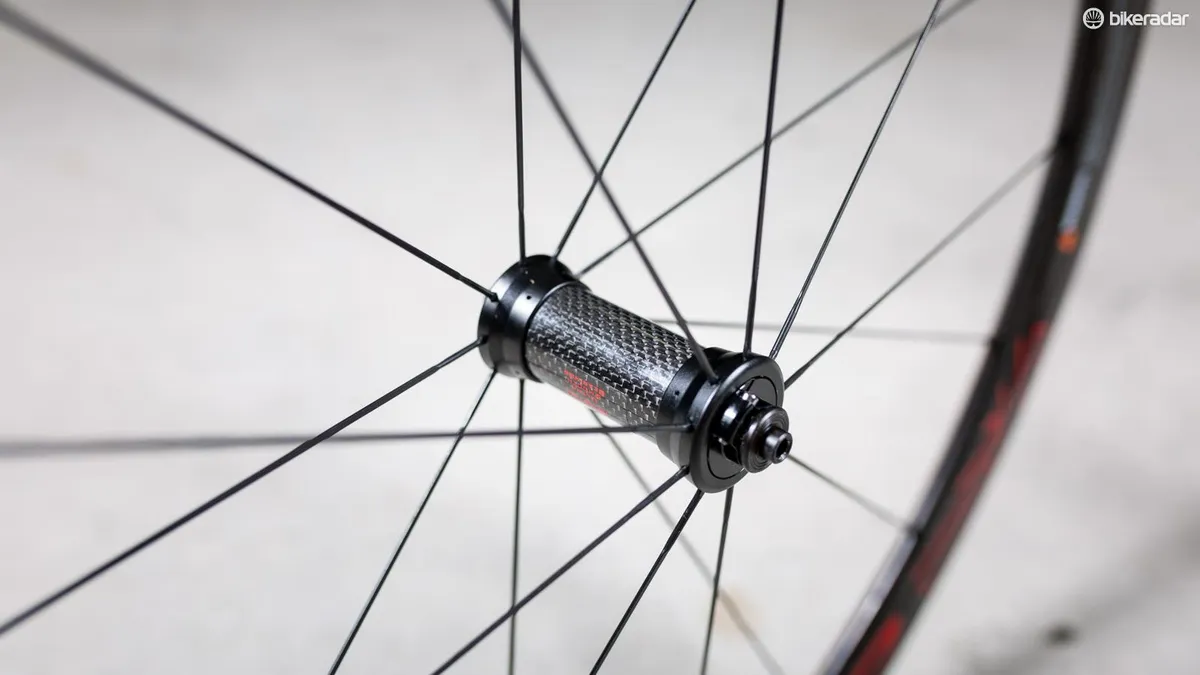
The Speed 40 rims are laced around Fulcrum's own hubs which spin on the brand's USB ceramic adjustable cup and cone bearing system. Out of the box the preload was perfectly adjusted and after months of testing the bearings are still super smooth.
Speed 40s vs. the competition
The Speed 40s fall into an interesting place in the wheel market as they’re pitched as a flagship wheel, but don’t carry the outrageous price tag that similar offerings from Enve, Zipp or even sister brand Campagnolo do.
The 303 NSWs are a bit taller at 45mm and a bit wider, measuring 28.5mm external and 17.25mm internal to the Speed’s 24.2mm external, 17mm internal. The Zipps are also a whole 5g heavier too, tipping the scales a 1,425g.
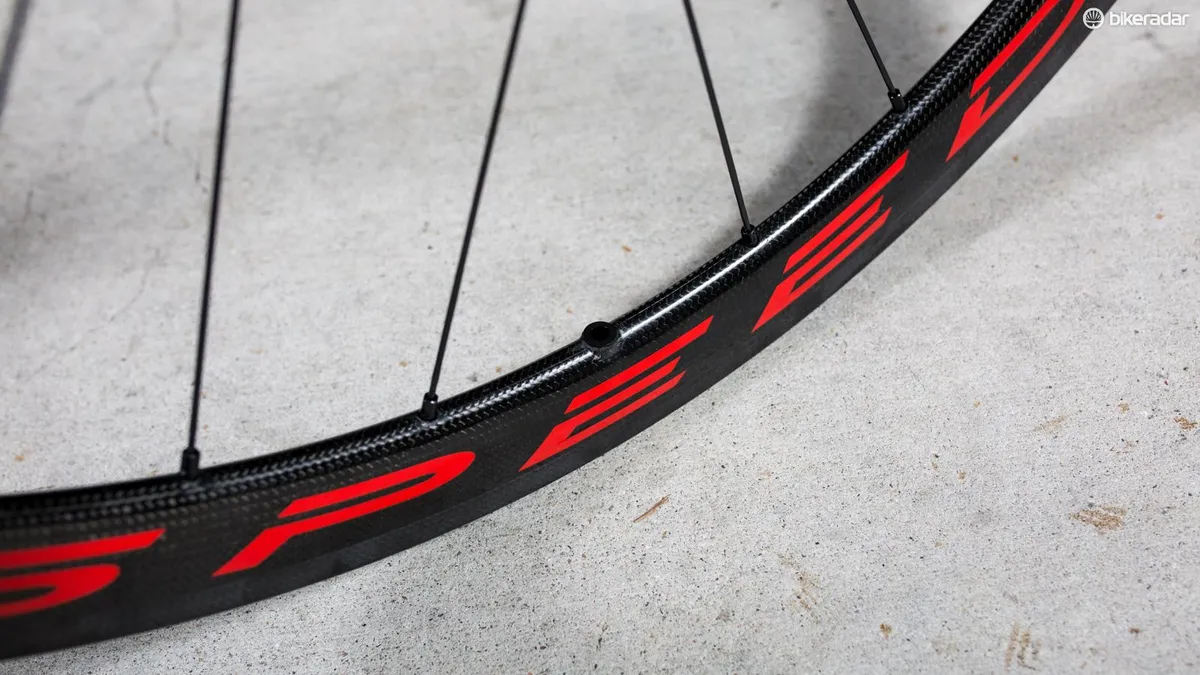
The 303s also offer a bit of crosswind taming witchcraft with dimpled side walls and a tordial rim profile. There is also a grooved brake track that our own Warren Rossiter describes as being “genuinely on a par with an aluminium braking track.” But, and there is always a but, the Zipps cost $3,100 / AU$4,790 for a set while the Speed 40s come in at a cool $2,230 / AU$2,600.
Then, there’s the other American carbon expert, Enve, whose SES 3.4 isn’t quite the same, with varied rim depths of 38mm deep x 29.75mm wide at the front, 42mm deep x 29mm wide at the rear. While they’re close in depth, the Enve's are quite a bit wider and a touch lighter at 1,416g (with a Chris King hub set) and tubeless too. But again they still cost more at $3,200 / AU$4,299.
French brand Mavic also has its Cosmic Pro Carbon SL C clincher that measures 40mm and weighs 1,450g, matching the Fulcrum's 17mm internal rim width, and are competitively priced in the US at $2,199.90 / AU$3,499.

Fulcrum also makes another 40mm rim, the Racing Quattro Carbon, which costs $1,399 / AU$1,699. This wheelset is pretty similar to the Speed 40, the only real difference being the Quattro is finished in unidirectional carbon rather than 3K and doesn't get a carbon hub shell in the front nor ceramic bearings.
All of this equates to a 135g weight difference as the Quattros tip the scales at 1,550g. Marginal gains ain’t cheap!
Speed 40s final verdict
The Fulcrum Speed 40 falls into an interesting place in the high-end wheel market, it's a flagship high-performance wheel that would be perfectly comfortable in a race situation and also doesn’t carry quite as heavy a price tag.
They are light, stiff, fast rolling and brake well in wet and dry conditions. They look pretty great too! The only real complaints I had were the slight ghost steering in the wind and the lack of tubeless compatibility despite the sealed rim bed — this is a missed opportunity in my opinion.
Considering their placement in Fulcrum’s range, the decision not to include the incredibly smooth CULT bearings initially seemed like an oversight as well, however the USB bearings are pretty damn smooth and in my mind it's money well saved.
So do the Speed 40s offer all the technology and performance of the tubular version? Yes and no. On paper the tubulars are lighter and receive the CULT ceramic bearings, which are smoother than the USB version. Also, a clincher wheel will never be able to match a tubular because air pressure is needed to keep the tyre attached to the rim. However, these wheels ride beautifully and under the same motor perform pretty darn close whether they're being used in a race or riding with your buddies.
They're still not cheap though, priced at £1,650 / €1,922 / $2,230 / AU$2,600. However, it's an extremely versatile high-end, high-performance carbon wheel that can mix it up with the best and leave a little more jangle in your pocket than some if its competitors.
